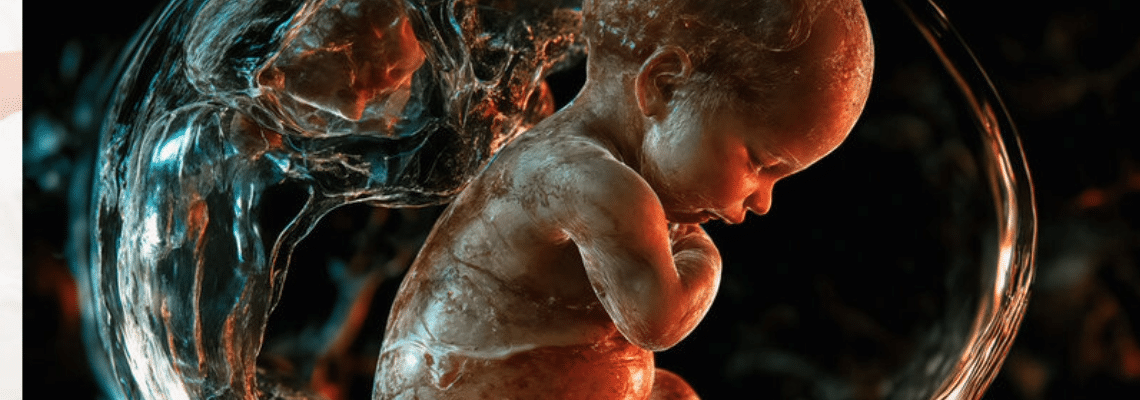
An international team of researchers led by scientists from the University of Vienna, who studied pregnancy in six different mammals—from humans to marsupials—has discovered how certain cells at the boundary between mother and child have been working together for over 100 million years. By mapping gene activity in these cells, they found that pregnancy is not just a battle between mother and fetus, but often a carefully coordinated partnership. These ancient cell interactions, including hormone production and nutrient sharing, have evolved to enable longer, more complex pregnancies and may explain why human pregnancy works the way it does today. These discoveries shed light on one of nature’s most remarkable innovations—the ability to successfully sustain pregnancy. The results were published in Nature Ecology & Evolution.
Study Identifies the Evolutionary Origins of the Cells and Molecular Signals that Connect Mother and Fetus
A pregnancy that lasts long enough to allow the development of the fetus is an evolutionary breakthrough of placental mammals—a group that includes humans. At the center of this is the feto-maternal interface: the site in the womb where the baby’s placenta meets the mother’s uterus and where two genetically distinct organisms – mother and fetus – are in close contact and constant interaction. This interface must maintain a delicate balance: it must be close enough to exchange nutrients and signals, but also protected enough to prevent the maternal immune system from rejecting the genetically “foreign” fetus.

To uncover the origins and mechanisms of this complex structure, the team analyzed single-cell transcriptomes—snapshots of active genes in individual cells—from six mammalian species representing important branches of the mammalian family tree. These included mice and guinea pigs (rodents), macaques and humans (primates), and two more unusual mammals: the tenrec (an early placental mammal) and the opossum (a marsupial that split from placental mammals before they developed complex placentas).
A Cellular “Atlas of Mammalian Pregnancy”
By analyzing cells at the interface between the fetus and the mother, the researchers were able to trace the evolutionary origin and diversification of the most important cell types involved. They focused on two main players: placental cells, which originate from the fetus and invade the maternal tissue, and uterine stromal cells, which are of maternal origin and respond to this invasion.
Using molecular biology tools, the team identified unique genetic signatures—patterns of gene activity that are unique to specific cell types and their specialized functions. Remarkably, they discovered a genetic signature associated with the invasive behavior of fetal placental cells that has been conserved in mammals for over 100 million years. This discovery challenges the traditional view that invasive placental cells are unique to humans and instead shows that they are a deeply conserved feature of mammalian evolution. During this time, maternal cells were not static either. It was found that placental mammals, but not marsupials, developed new forms of hormone production—a crucial step toward longer pregnancies and more complex gestation, and a sign that fetuses and mothers may influence each other’s evolution.
Strong Coordination Between Mother and Fetus
To better understand how the interface between fetus and mother works, the study tested two influential theories on the evolution of cellular communication between mother and fetus. The first, the “disambiguation hypothesis,” predicts that over the course of evolution, hormonal signals have been assigned unambiguously to either the fetus or the mother—possibly as a protective measure to ensure clarity and prevent manipulation. The results confirmed this assumption: certain signals, including WNT proteins, immunomodulators, and steroid hormones, could be clearly traced back to a source tissue.
The second, the “escalation hypothesis” (or “genomic conflict”), suggests an evolutionary race between maternal and fetal genes – whereby, for example, the fetus amplifies growth signals while the maternal side attempts to dampen them. This pattern was observed in a small number of genes, particularly IGF2, which regulates growth. Overall, the results pointed to finely tuned cooperative signaling.
“These results suggest that evolution may have favored greater coordination between mother and fetus than previously thought,” says Daniel J. Stadtmauer, lead author of the study and now a researcher at the Institute of Evolutionary Biology at the University of Vienna. “The so-called power struggle between mother and fetus appears to be limited to specific genetic regions. Instead of asking whether pregnancy as a whole is a conflict or a cooperation, it may be more meaningful to ask: Where is the conflict?”
Tracking Evolutionary Innovations at the Cellular Level
The team’s discoveries were made possible by combining two powerful tools: single-cell transcriptomics, which captures the activity of genes in individual cells, and evolutionary modeling techniques that allow scientists to reconstruct what traits may have looked like in long-extinct ancestors. By applying these methods to cell types and their gene activity, the researchers were able to simulate how cells communicate in different species and even gain insight into how this dialogue has evolved over millions of years. “Our approach opens a new window on the evolution of complex biological systems – from individual cells to entire tissues,” says Silvia Basanta, co-first author and researcher at the University of Vienna. The study not only provides insight into how pregnancy evolved, but also offers a new framework for tracking evolutionary innovations at the cellular level—findings that could one day improve our understanding, diagnosis, or treatment of pregnancy complications.


